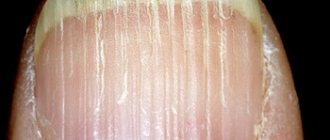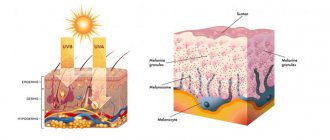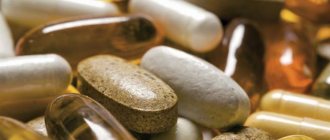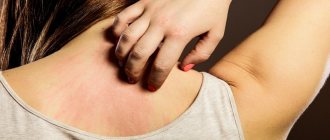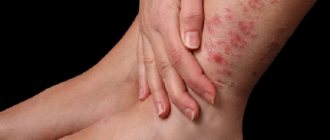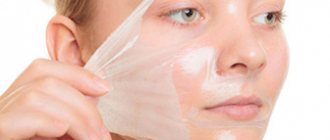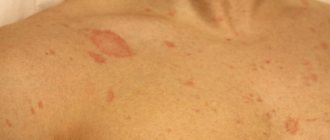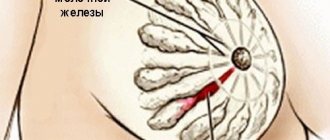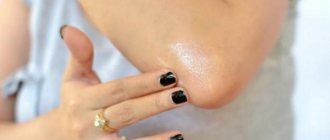What do they mean?
White spots on toenails are a fairly common problem that develops around the nail cuticle. It can occur regardless of age, gender and geographic location. White spots can be caused by a variety of reasons, including fungal infections, injuries, nutritional deficiencies and allergic reactions. They may also appear as small semicircular spots.
White spots on nails can be treated with medical treatments or home remedies. If the problem persists, you should consult a doctor.
What to do if there are white spots on your toenails? Photos of patients
Most often, leukonychia remains only a visual manifestation of a specific pathological process. On its own, it does not cause discomfort and generally does not require specific treatment.
Sometimes it happens that people don't even notice the white spots under their toenails. The photo below shows a slight spread of leukonychia without subjective sensations.
In this case, the process is caused by hypovitaminosis. When you normalize your diet, the spots will disappear on their own.
The next photo already shows a more extensive lesion of the nail plate, which is difficult to miss.
Considering the additional presence of itching and discomfort in the foot, one can argue about a fungal infection. In this case, it is necessary to carry out specialized treatment using appropriate medications.
In any case, if a white spot appears on your toenail, you need to establish the cause of this condition. If there are diseases of the internal organs, it is necessary to treat the underlying disease. If there is a deficiency of certain substances in the body, adjust the diet. Leukonychia is a visual signal that there is a certain problem in the body. With timely diagnosis and initiation of quality treatment, the situation can be prevented from worsening.
Causes
Fungal infection
Onchomycosis - nail fungus
Fungi are the main cause of nail problems. A nail fungus called onchomycosis may occur. This infection is characterized by small white spots and the nails appear flaky, thick and brittle. The disease may even spread to other nails. In some cases, the spots may take on colors other than white.
The main factors in the development of fungal infections are:
- Shoe sharing: This occurs when you share shoes or socks with an infected person.
- Using nail polish: It blocks air circulation in the nail, which can promote the development of fungal infections.
- Walking barefoot: The soil contains many microorganisms.
- Sweaty feet: The damp environment in shoes resulting from sweating creates favorable conditions for the development of fungal infections.
Nutrient deficiency
Nutrient deficiencies can be caused not only by poor diet, but also by diseases.
Lack of minerals and nutrients can lead to white spots on the toenails. Most often this is due to a deficiency of zinc, iron and calcium.
Zinc deficiency
Zinc helps maintain strong immunity in the body. The absence of this essential mineral makes a person vulnerable to infections and can therefore cause white spots on the toenails.
Calcium deficiency
Calcium is vital for the development of teeth and bones. It is also necessary for the development of a healthy, strong nail plate. A deficiency of the mineral can result in weak nails, susceptible to injury and infection, leading to brittleness and discoloration of the nails.
Iron deficiency
Lack of iron leads to problems with the distribution of nutrients in the body. Thus, it can lead to brittleness of the nail plate and formation of white spots.
Vitamin E deficiency
Vitamin E helps support the immune system in the fight against bacterial, viral and fungal infections. Its deficiency can lead to infections and diseases, and, as a result, problems with nails.
Injury
Injuries at the base of the nail can result in burgundy, blue, and then black spots due to hemorrhage. If this results in a scar under the nail plate, it can cause a white spot under the nail for life.
Allergic reactions
Light spots on the nails can be the result of various allergies. The most common causes of allergic reactions are certain products used for cosmetic purposes, such as nail polishes and nail polish removers. Stains do not appear immediately, but only after the product has been used for a long period of time. This should not be a problem as stopping the use of the product will be enough to remove the stains.
Internal diseases
- Liver diseases
- Kidney diseases
- Pneumonia
- Heart disease.
These diseases are a rare cause of white spots on the toenails. If the problem becomes permanent, it is recommended to consult a doctor.
Tight shoes
Wearing closed and tight shoes can put excessive pressure and friction on your toes. Thus, it can lead to nail problems. Tight shoes can also cause excessive sweating and insufficient air flow to the feet, which can lead to the development of fungus.
Causes of the disease
The nail must be examined carefully
The basis for changes in nail color is the pathology of their formation. To determine the reason why air microbubbles may appear on the nails, the patient needs to visit a dermatologist. Nail regrowth takes about six months. The doctor pays special attention to this period in the patient’s life.
If the white coating on the nail is the result of an injury, no additional treatment will be needed. A neat, gentle pedicure will remove exfoliated areas, and the nail plate will grow back on its own in six months.
Your doctor may prescribe a multivitamin supplement to improve growth and structure. If a white toenail is caused by wearing tight shoes or shoes with too narrow a toe, the patient needs to get rid of this habit.
If the plates begin to turn white due to the application of decorative cosmetics to them, its use should be excluded. Fungal infection is a fairly common disease among the adult population. Additional signs indicating a fungal infection are:
- unpleasant odor;
- brittleness and crumbling of the nail surface;
- soreness around the lesion.
For a more complete diagnosis of fungal infection, a culture of the nail is performed and a fragment of it is studied. The doctor may request a spectral analysis to distinguish between fungal infection and chemical damage. If, during the diagnosis, the doctor is alerted by the symptoms of the patient’s internal state, a general blood test will be prescribed. This method allows you to reliably find out why white spots appeared on your nails.
There are many reasons for the change. They can be caused by:
- diabetes;
- allergies, dermatitis;
- jaundice;
- various fungi
- psoriasis;
- renal failure;
- damage to the lungs and heart, leading to tissue oxygen deficiency.
A change in nail color can also occur due to smoking or mechanical trauma.
White spots indicate a lack of calcium or zinc. A white spot on the big toe nail in the area of the hole indicates kidney pathology. If it turns yellow, the lymphatic or respiratory system is affected, this may also be a sign of cancer and diabetes.
White spots after pedicure
Pedicure is a cosmetic procedure for the feet and nails. Pedicures are performed for several reasons, including cosmetic, therapeutic, and medicinal purposes. Often a pedicure is done in such a way that it does not require repeating for several weeks, but this can lead to some consequences.
If nail polish is left on the surface of your nails for too long, it can soak into the top layers and dry them out, causing fungus, bacteria and mold to develop under the nail plate. After removing the nail polish, you may notice white spots on your nails. If this happens, you can perform some procedures to treat them, but this will take some time.
After removing the varnish
White spots on toenails after removing nail polish
Spots on nails after removing nail polish can be caused by allergic reactions from the use of aggressive products. They can also be caused by the polish being absorbed into the top layers of the nail and drying out the plate.
If this happens, you might want to try not using polish for a while.
Signs
Many people are in no hurry to eliminate leukonychia, because they are sure that the presence of white spots on the fingers is a good sign, according to some signs.
What do white spots on fingernails indicate, based on superstitions:
- to a quick new thing;
- if a person now has a “black streak” in life, then it will soon end;
- for the patient, the appearance of white spots on the fingers promises a speedy recovery;
- the appearance of three specks on the nails of one hand is a sign of great luck. If 3 specks appear on different hands, then this means failure;
- if the white dots turn yellow over time, then financial collapse should be expected in the near future;
- the appearance of a white spot on the thumb - to a new thing, on the index finger - to sadness or irritation, on the middle finger - to quick happiness and financial well-being, on the ring finger - to a family scandal, on the little finger - to mutual love and well-being.
Whether you believe in these signs or not is up to you! But when leukonychia appears, it is still advisable to visit a doctor to find out the exact cause of this phenomenon.
Treatment
White spots are completely harmless, even if you don't try to get rid of them immediately. Their treatment involves treating the underlying cause if they appear large or are numerous.
Antifungal nail polish
Antifungal nail polish is a common drug in the pharmacy, and many doctors prescribe drugs such as Ciclopirox. They are not only effective for treating nails, but also for covering blemishes. Each application creates a protective layer that must be removed using a cotton ball soaked in alcohol after 7 days.
Antifungal drugs
Advanced nail fungus is usually a difficult problem to treat. Your doctor may recommend using an oral antifungal medication. Oral antifungals are often preferred because it is difficult to apply creams under the nail. When using only topical treatments, treatment takes longer.
You can also use an antifungal spray, which can help prevent the growth of fungal spores. You can also try antifungal soap with tea tree oil.
Use of these products must be continued consistently for about three months to completely cure the infection.
Laser treatment
You can use a laser to heat the nail bed and destroy the fungal infection. Laser treatment is faster and has no side effects. Its main disadvantages are the high price, sometimes pain and repeated use.
Before and after treating white spots caused by fungus with laser therapy
Avoiding allergens
If white spots on your toenails are the result of an allergic reaction, you should stop using the product and consult your doctor.
White vinegar
White vinegar is a natural home remedy and a quick way to get rid of this problem. Below is the application procedure:
- Mix two parts vinegar and one part water in a bath or basin.
- Soak your toes in the solution for about 20-30 minutes.
- Repeat this process at least twice a day. Continue treatment until the spots disappear.
- You can reuse the same vinegar solution two or three times.
Balanced diet
Mineral deficiencies can be corrected with a diet rich in vitamins and minerals, especially calcium and zinc. Given the nature of the white spots on the nails, it is better to consult a nutritionist for advice.
Avoid fungal growth
It is also important to prevent the spread of fungus, which can be achieved by washing your hands and feet frequently with soap and warm water. For best care, keep your toenails short and clean. Until the fungus is completely cleared, you must continue treatment with home remedies and those prescribed by your doctor. It's also important to dry your feet with a clean towel and avoid sharing personal items such as towels, pedicure sets, and nail clippers.
Consequences
What can leukonychia lead to? It all depends on what kind of disease caused it. If the manicure or household chemicals are incorrect, then it is enough to temporarily abandon them so that the white spots disappear on their own. In the case when the pathology is caused by a fungal infection, the unpleasant consequence is that loved ones become infected and that the fungi from the diseased nail spread to healthy ones.
If the formation of white spots on the fingers is due to the presence of internal diseases, then it all depends on the pathology itself and how quickly treatment began. Leukonychia itself is not dangerous, but the factors that cause it can negatively affect a person's health.
Folk remedies
White spots on nails can be easily cleared using natural remedies. Folk remedies require long-term use to produce an effect. They are also cheaper and safer than using topical antifungal creams.
Tea tree oil
The active ingredients in tea tree oil are responsible for its antifungal properties and are effective against onychomycosis. They are also responsible for controlling the development of other microbial agents without causing damage to the nails or surrounding skin.
You must ensure that you use 100 percent tea tree oil and apply it every day to the surface of your toenails.
Apple vinegar
Apple cider vinegar is often used to treat a wide range of health problems. This is because it has antifungal properties, which make it suitable for treating white spots on nails.
- Add some water to the apple cider vinegar in a container to dilute it
- Soak a piece of cotton wool in the solution
- Massage the affected area for about 15 minutes
- Repeat this procedure twice a day for 3 weeks or until the infection goes away.
Proper nutrition
In order for you to have healthy, strong nails, you need to consume the optimal amount of vitamins, minerals and macronutrients. The diet should contain vitamins A, B, C, D and E, as well as zinc, calcium and magnesium.
Hydrogen peroxide
Hydrogen peroxide promotes the regeneration of nail cells and tissues. Due to its whitening properties, hydrogen peroxide is applied using cotton swabs twice a day to toenails with white spots to get rid of them.
Lemon
Lemon has strong antibiotic properties, which are important for treating fungal infections and strengthening depleted cells. Lemongrass is a powerful antifungal herb; it also stimulates the growth and regeneration of cells in the nails and is very effective in treating fungal infections. White spots are removed by soaking a mixture of lemon juice and iodine in equal proportions into the nails. This treatment is very effective.
Garlic
Garlic contains antifungal and antimicrobial substances. Garlic paste can be applied to infected nails and left under clothing.
Decolorized iodine
Bleached (white) iodine is considered very effective in the West for strengthening and healing nails (including nail stains). Apart from this, it has many other uses, including improving the condition of hair, and does not leave any stains on the skin. This product is an alcohol solution of potassium iodide and ammonium iodide. It should be applied twice daily, topically to the affected areas, to achieve results.
You most likely won’t be able to purchase an analogue in our pharmacies, so you can order “Decolorized iodine” on Amazon.com with international delivery.
Yogurt
Yogurt contains lactobacillus acidophilus, which is effective in fighting fungi, especially those caused by yeast infections. It can be applied to the nail beds and left on for about 20 minutes before rinsing off. After thorough cleaning, you need to dry your nails.
Cinnamon oil
Cinnamon oil also has antifungal properties. Cinnamon can be applied directly on the affected area for better effect.
Oregano oil
Oregano oil has strong antifungal properties. It should be applied twice daily to the stained nail surface.
Thyme
Thyme is an effective anti-toxic herb. It helps eliminate nutritional deficiencies in the body and also prevents the abnormal development of fungi. This remedy is effective for treating fungal nail infections naturally.
Coconut oil
Coconut oil is an ideal homemade antifungal remedy. This product is applied topically to the affected areas three times daily. Coconut oil also prevents your nails from coming into contact with moisture, which prevents fungal growth.
Hydration
This is an effective way to get rid of and also prevent the appearance of white spots that can occur as a result of injuries or allergies.
Therapy for spots on nails
Using a toe spray
To treat white spots on the nail plates, you need to eliminate the symptoms that caused the lesion. Therapeutic measures can be:
- general;
- local.
General activities will include:
- streamlining the nutritional structure;
- exclusion of stressful situations.
Regularization of nutrition should include a set of measures to create a diet balanced in all groups of valuable substances. It is especially important to include fermented milk products, leafy vegetables, and olive oil in the menu.
Increasing the stress threshold is achieved by streamlining the daily routine, introducing standardized physical activity, and correct alternation of work and rest. Local treatment in case of leukonychia will be aimed at strengthening the nail plate and enhancing its growth. As it grows, the white spots will disappear.
Spots on the nails should not appear if you use:
- baths with sea salt: 1 liter. add 1 tbsp of warm water. l. salt;
- Apply Aevita oil solution to the sore spot for 10 days;
- composition of olive oil and lemon juice - apply to affected toenails for 7 days;
- mixture for covering nails: take five drops of iodine for 50 ml of oil, five capsules of Aevita - use every day as a varnish.
When diagnosing a fungal disease (onychomycosis), the doctor finds out what type of fungus is causing the disease and prescribes treatment. Fungal infection occurs against the background of a general weakening of the body or with age-related changes. Provoking factors for the development of fungal nail infections are:
- obesity;
- diabetes;
- diseases of the gastrointestinal tract;
- disorders of the thyroid gland.
Complex therapy for fungal infection should include:
- destruction of the lesion with local drugs (creams Lamisil, Exifin, Mikonorm, Mikospor);
- taking antifungal drugs;
- restorative therapy.
Treatment of fungal infections is carried out strictly with the means prescribed by the doctor. Self-treatment with antifungal drugs is dangerous.
Prevention Tips
- Trim your nails correctly: Maintain nails at the correct length to avoid infection or injury. Trim your nails horizontally, straight, about once a week.
- Keep your toenails moisturized: Try to maintain or restore the natural oils (sebum) in your nails and skin with creams, lotions, or other moisturizing products, especially after activities that may cause dry skin and nails.
- Maintain a healthy diet: Eat a healthy, balanced diet that includes fruits and vegetables, foods rich in calcium, and foods containing zinc. If nutrition is not enough to correct the nutritional deficiency, you should consider taking supplements.
- Proper footwear: You should be careful when doing activities that may cause injury to your toenails. Wear safety shoes if there is a possibility of an object falling on your toes.
- Prevent infection: do not walk barefoot in suspicious places and do not exchange shoes. In addition, keep your feet free from sweat using special powders.
- Keep it clean: Keeping your feet and toenails clean will prevent fungal infections from developing.
- Use sharp and clean wire cutters and a cardboard file instead of a metal file. You need to file your nails from the outside to the inside in one direction.
- Keep feet dry: Wet conditions favor the development of fungal infections. Remember to always dry your feet properly before putting on your shoes.
